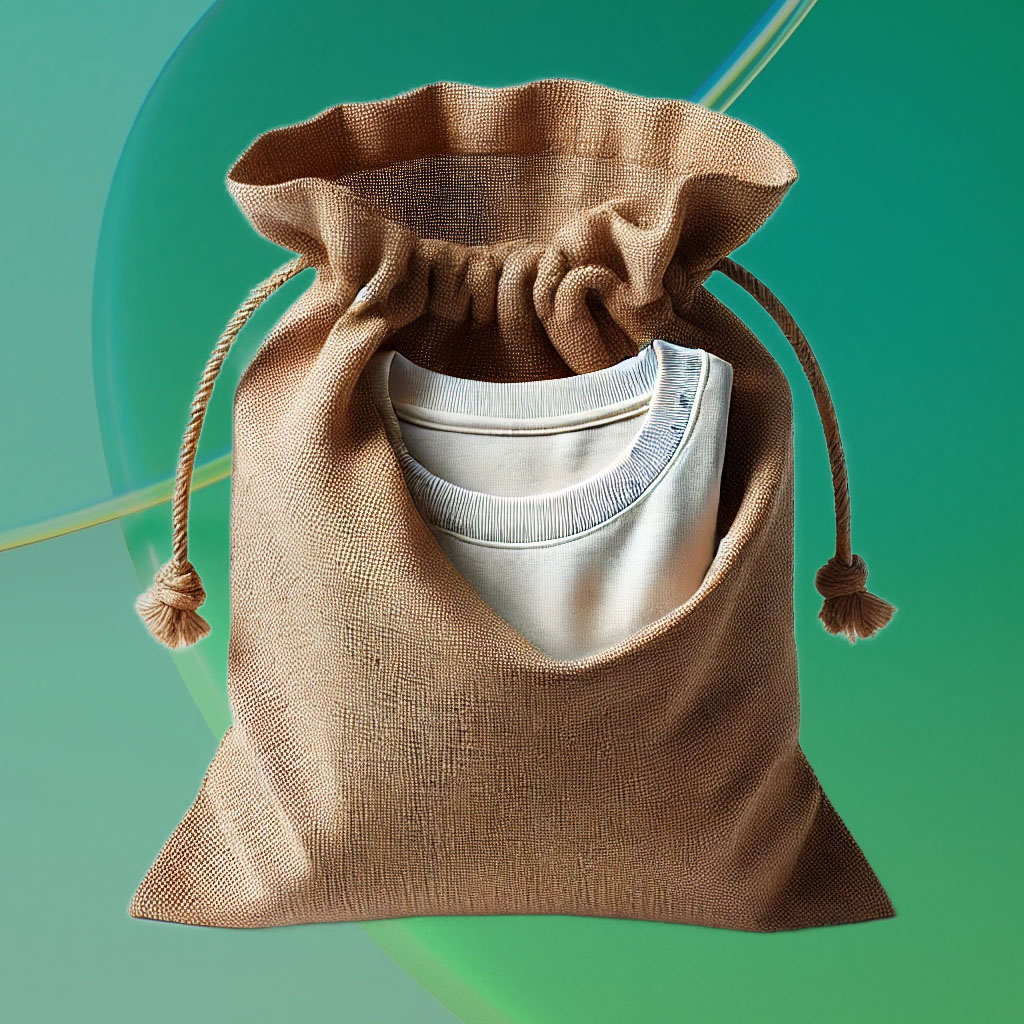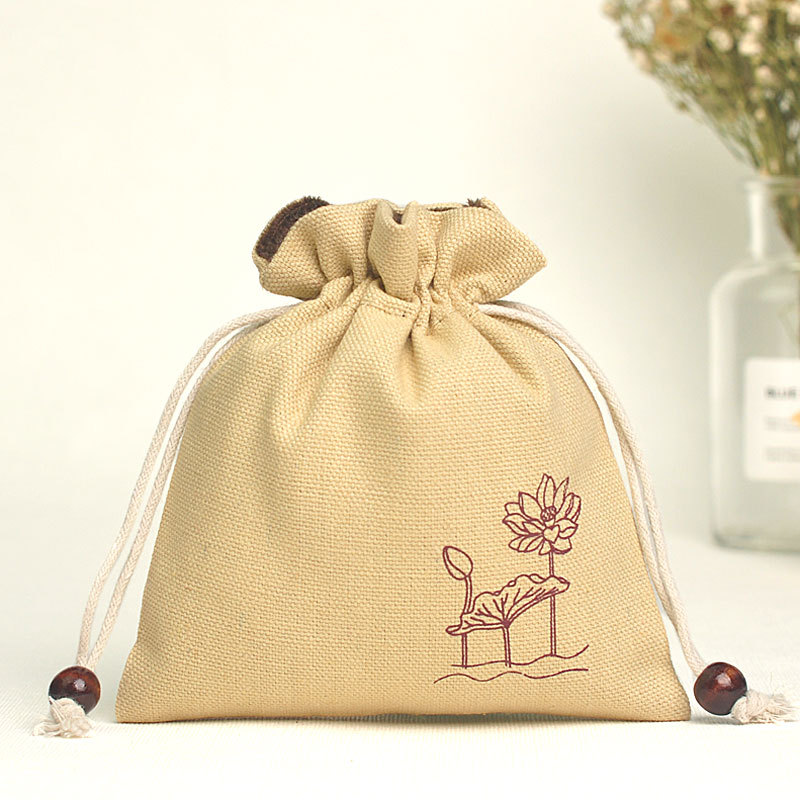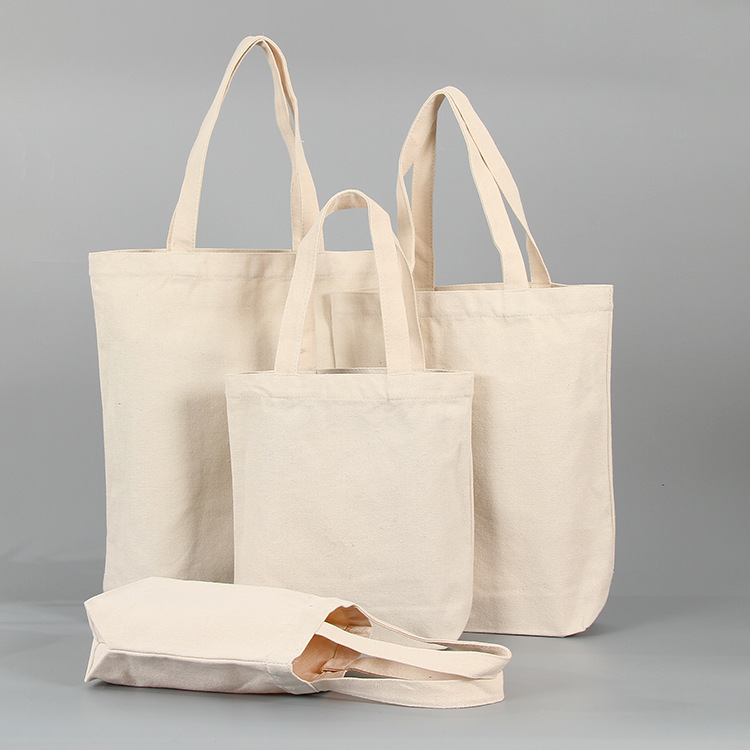Linen Drawstring Bags: Eco-Friendly Aesthetics and Practical Design in Apparel Packaging
In the era of fast fashion, apparel brands are increasingly recognizing that packaging is not just the "outerwear" of a product but also a vital medium for conveying brand values. In recent years, linen drawstring bags have gained popularity in apparel packaging due to their natural texture, eco-friendly attributes, and versatility across different settings. From luxury custom gift boxes to everyday packaging for niche brands, these seemingly modest bags are redefining the value of packaging in their own unique way.
The Natural Advantages of Linen Bags: Why Are Brands Embracing Them?
Eco-Friendly by Nature, Aligned with Sustainability Trends
Linen plants have a short growth cycle (mature in 3-4 months), require minimal pesticides during cultivation, and generate over 50% less carbon emissions than cotton.
Fully biodegradable—decomposes naturally within 180 days, avoiding the “millennium pollution” problem of traditional plastic packaging.
Premium Texture, Enhancing Brand Image
Linen’s distinctive texture and matte finish soften the industrial feel of apparel products, reinforcing a brand identity centered on nature, craftsmanship, and slow living.
Case Study: A Nordic apparel brand adopted linen bags for packaging, resulting in an 18% increase in customer retention and a 40% rise in social media unboxing posts.
Practical and Multi-Purpose
Drawstring closure ensures ease of use and reusability.
Highly durable—customers often repurpose them as storage bags, shopping totes, or even home decor.
Key Design Considerations for Linen Drawstring Bags
Though linen drawstring bags appear simple, crafting a functional and well-received product requires careful attention to these core aspects. Clarifying these design principles in plain terms streamlines both production and customer communication.
Material Selection: Choosing the Right Linen Matters
Pure Linen vs. Blended Linen
Pure Linen: Offers a natural texture but is more expensive and prone to wrinkling—ideal for high-end brands.
Blended Linen (Linen + Cotton/Polyester): More affordable, wrinkle-resistant, and durable—suitable for everyday use.
 Pro Tip: Many export orders use a 55% linen + 45% cotton blend to balance cost and texture.
Pro Tip: Many export orders use a 55% linen + 45% cotton blend to balance cost and texture.
Fabric Thickness Selection
Lightweight (150-200g/m²): Breathable and ideal for packaging T-shirts, scarves, and delicate items.
Heavyweight (300g/m²+): More robust, making it suitable for use as a shopping bag.
Closure Design: Functionality Comes First
Drawstring Configurations
Single Drawstring: A single cord pulled from both ends—cost-effective but prone to loosening.
Double Cross-Drawstring: Two cords threaded in opposite directions—locks securely when tightened, offering better sealing.
 Note: Choose cotton or linen drawstrings with a diameter of 5-8mm to ensure a comfortable grip.
Note: Choose cotton or linen drawstrings with a diameter of 5-8mm to ensure a comfortable grip.
Anti-Loosening Features
Hidden Snap Closure: Secures the drawstring after tightening—ideal for heavier items.
Wooden Bead Stops: Allows users to knot the string around the bead, adding both a vintage touch and practicality.
Bottom Design: The Foundation of Durability
Flat Bottom vs. Reinforced Base
Flat Bottom: Cost-effective, suitable for lightweight clothing.
Reinforced Square Bottom: Extra fabric layer increases load capacity to 5kg, ensuring secure transport.
Foldable Space-Saving Features
Side Creases: Allow for easy flattening when not in use, optimizing warehouse storage.
Hidden Expansion Panel: Unfolds to increase capacity—perfect for carrying extra garments.
Fine Craftsmanship: The Details That Make a Difference
Seam Quality Matters
Double-Stitched Edges: Reinforces durability and prevents linen from fraying.
Reinforced Corners: Triangular reinforcement patches at bottom corners enhance load-bearing capacity.
Handle Design: Thoughtful Convenience
Short Handles (15-20cm): Ensures easy hand-carrying without dragging on the ground.
Convertible Shoulder Strap: Adjustable drawstring doubles as a crossbody strap, making it a two-in-one design.
Printing and Embellishments: Enhancing Brand Recognition
Three Cost-Effective Branding Options
Silkscreen Printing: Vibrant colors, best for simple logos.
Heat Transfer Printing: Supports complex patterns but has limited wash durability.
Embroidered Labels: Adds a premium touch, though at a higher cost.
Subtle Natural Aesthetic Enhancements
Frayed Edges: Unfinished seams create a handcrafted look.
Mixed-Tone Linen Cord: Blending jute and gray linen threads results in a rustic yet unique appeal.
Smart Packaging Innovations in Apparel Design
Closure Design: Balancing Convenience and Aesthetics
Dual-Tone Cross-Drawstring: Uses two different-colored linen cords for a layered visual effect while ensuring secure closure.
Magnetic Snap Assist: Hidden magnets at the opening prevent unintended loosening—ideal for packaging premium scarves, ties, and other slippery fabrics.
Hidden Functional Features in the Bottom Design
Reinforced Square Base: Supports over 5kg to prevent fabric distortion during transit.
Collapsible Design: Flattens for easy storage, reducing warehouse and logistics costs.
Selecting the Right Printing Techniques
Botanical Dye Printing: Uses natural dyes from tea leaves and fruit peels to create unique, irregular textures—perfect for niche designer brands.
Laser Engraving: Burns logos into the fabric using precision heat, creating a chemical-free, long-lasting imprint.
Turning Linen Bags into "Walking Advertisements"
Embedding Brand Storytelling
Print the linen’s origin on the bag (e.g., “Made from organic linen sourced in XX region”) to emphasize sustainability.
Replace plastic tags with stitched fabric labels containing washing and care instructions for added practicality.
Creating an Interactive Customer Experience
DIY Customization Kits: Include embroidery thread, buttons, or patches to encourage consumer personalization.
"Old Bag for New" Initiative: Recycle worn linen bags into branded merchandise like coasters or bookmarks.
Cross-Scenario Application Cases
A sportswear brand designed a shoe box + gym bag hybrid, integrating breathable mesh pockets for accessories.
A children’s clothing brand printed a doodle section on the bag where parents can record their child’s height and weight, adding sentimental value to the packaging.
Balancing Cost and Value
Cost-Saving Strategies
Opts for blended linen (linen + cotton or polyester) to retain texture while reducing material costs.
 Smart fabric layout: Arrange bag panels in a mirrored pattern to save up to 10% of fabric waste.
Smart fabric layout: Arrange bag panels in a mirrored pattern to save up to 10% of fabric waste.
Unlocking Premium Pricing Potential
High-end lines can incorporate handwoven linen cords and engraved brass brand plates for an upscale feel.
Offer custom hot stamping for corporate gift orders, enhancing exclusivity.
Conclusion: Small Bag, Big Value
The rise of linen drawstring bags is no coincidence—they embody both the eco-conscious shift in consumer behavior and the growing demand for thoughtful design. For apparel brands, these bags not only help mitigate environmental compliance risks but also serve as subtle brand messengers through meticulous details. From a manufacturing standpoint, flexible adjustments in material blends and printing techniques allow brands to control costs while maintaining uniqueness.
When packaging evolves from a mere container into a bridge between brands and consumers, the understated "aesthetic of simplicity" in linen bags unlocks vast commercial possibilities.




 Pro Tip: Many export orders use a 55% linen + 45% cotton blend to balance cost and texture.
Pro Tip: Many export orders use a 55% linen + 45% cotton blend to balance cost and texture.
 Smart fabric layout: Arrange bag panels in a mirrored pattern to save up to 10% of fabric waste.
Smart fabric layout: Arrange bag panels in a mirrored pattern to save up to 10% of fabric waste.
 We like to do design according to all the customers' requirements, or offer them our new designs. With strong OEM/ODM capabilities, we can fill your sourcing demands.
We like to do design according to all the customers' requirements, or offer them our new designs. With strong OEM/ODM capabilities, we can fill your sourcing demands.